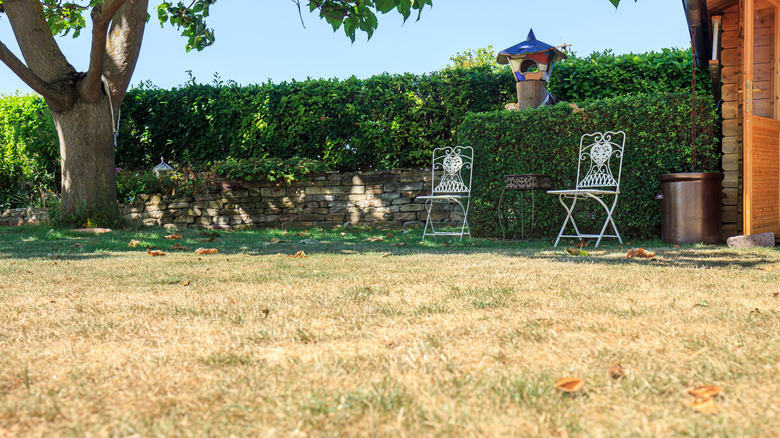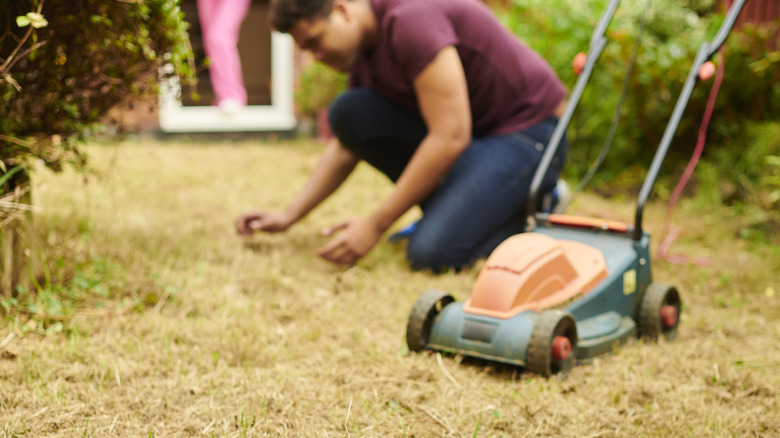You'll Want To Cut Your Grass To A Different Height During A Drought
Dry seasons can be devastating for many grass species, especially in locations that typically get plenty of rainfall. So if you're suffering a drought in your area, you will likely notice that your lawn behaves differently. In many cases, it'll turn brown and become extremely sensitive; if you don't take proper care of your lawn when this happens, the grass layer will almost detach from the roots, ruining the turf entirely.
One of the most critical factors determining your lawn's health in these circumstances is how frequently you mow and how short you cut the blades when you do. Experts recommend only trimming infrequently during droughts to ensure your turf can withstand them much better. Additionally, they recommend mowing at a very high setting; most professional gardeners suggest keeping your grass as high as four inches during dry seasons. We'll show you why you should keep it that high and other tips to better care for your turf during the most brutal droughts.
Why you shouldn't cut your grass short during a drought
Corporate agronomist for Lawn Dawg and member of the National Association of Landscape Professionals, Bob Dann, told HGTV that you should cut your grass relatively high during droughts. "Keeping grass cut at a height of 3 to 4 inches will create a deeper root system that will pull more water from deep in the soil," Dann explained.
Besides making your lawn's root system longer and more robust, Dann also explained that keeping your lawn longer can help you conserve water. "Longer grass will keep the soil cooler, and that means you're not going to use as much water to keep your lawn as healthy as possible during a drought," he said. However, depending on the stage of the drought and your grass species, you might need to stop mowing entirely. If your grass has already entered a dormant stage, experts recommend that you stop cutting altogether to put the least amount of stress possible on your lawn. You can tell whether your brown lawn is dead or dormant with a simple tug test; tugging on dead grass will result in uprooting the blades, whereas dormant grass should remain in the ground.
Other lawn care tips during droughts
During droughts, some fundamental maintenance measures are essential to keep your turf as healthy as possible. If you have drought-tolerant grass, you could even enjoy a green view. First, use your grass clippings as mulch after mowing during the early stages of a drought. This will help keep moisture in the soil and create even more shaded spots to minimize evaporation. However, if the drought drags on for an extended period, you'll have to water your lawn to prevent the grass from dying.
Even though it's necessary to provide some water for your lawn when the weather isn't cooperating, don't water your lawn every day during droughts. That said, when you do it, use plenty of water. It's also recommended to do this before sunrise; this way, water can take its time to settle into the soil without evaporating in the hot sun. While some people do this after sunset, this could create problems with fungus growth.
Lastly, lower the foot traffic on your lawn as much as possible, especially on sensitive grass species. This will reduce the stress on the lawn so it can remain as strong as possible. If you follow these simple steps, you can potentially enjoy a healthy lawn even during the driest seasons.


